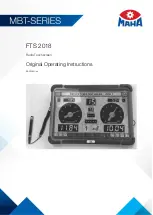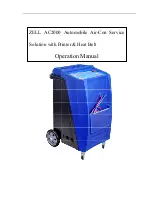
Multec 3.5 Fuel Injector Application Manual
Software
Delphi Energy and Chassis Systems
Revision:
11/05-1
5-17
fuel metered at the intended port. Occurrence of this is highly dependent
on fundamental engine and intake port design (i.e. relative locations and
sizes of port areas). In this case, delaying the arrival of fuel at the intake
valve (closer to valve opening) may reduce port fueling errors.
5.3
Diagnostics
5.3.1 Fuel Trim Diagnostics
The long-term correction has defined limits on the amount of correction it
can make to fuel injector flow. On some systems, if the flow has shifted
to the extent that emissions will increase by a predetermined percentage,
the Malfunction Indicator Lamp (Service Engine Soon) will illuminate,
and a diagnostic trouble code will be stored in the engine controller.
Shifts of this magnitude indicate that something in the engine control
system is incorrect. Possible causes could be, but are not limited to,
problems with the following:
•
Injector
•
Fuel pressure regulator
•
Fuel pump
•
MAP sensor
•
Vacuum leaks
•
O2 sensor
•
Wiring
•
Purge system
Note
Fuel injector limit-durability-parts need to be tested in conjunction with
other air/fuel components impacting this diagnostic. On some software
systems, limit-parts can be simulated through calibration changes to test
diagnostics. Delphi can assist in guiding customers.
OBD II regulations require three specific types of diagnostic tests:
component tests, systems tests, and ECM/PCM tests. A diagnostic test
failure that results in more than an allowable increase in emissions is
required to illuminate the MIL (Malfunction Indicator Lamp). The
allowable emissions increase is set by the regulating authority.
A fuel injector flow rate shift may be diagnosed as a fuel trim too rich or
too lean condition.
Содержание Multec 3.5
Страница 2: ......
Страница 120: ......
Страница 140: ......
Страница 154: ......
Страница 170: ...Appendix Multec 3 5 Fuel Injector Application Manual 10 16 Delphi Energy and Chassis Systems Revision 11 05 1...
















































